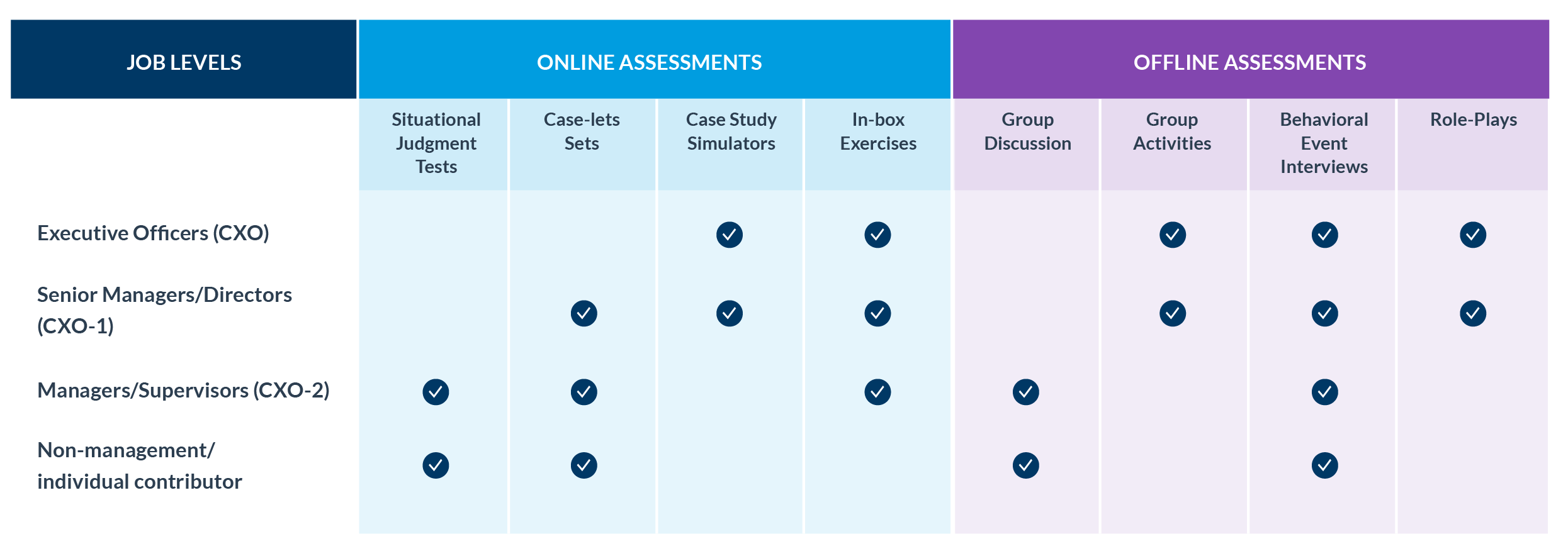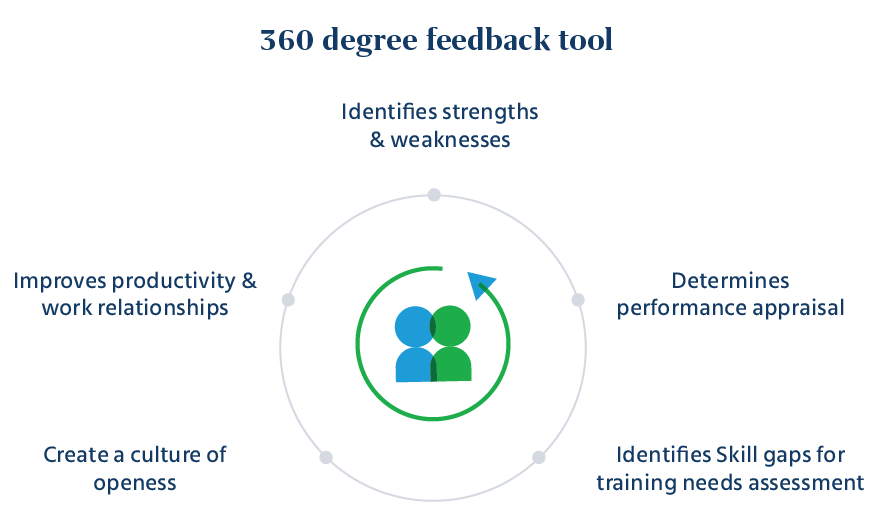

The post-pandemic world has witnessed a significant transformation in the business landscape, which is significantly changing the core of the modern workplace ecosystem in various ways. The social and economic crisis in the aftermath of the pandemic has underscored the importance of resilient leadership that can help safeguard against constantly evolving threats and encourage opportunities for charting a sustainable growth path. A highly dynamic and complex world demands leaders to exhibit new-age capabilities apart from driving business, efficiency, and operational excellence.
Organizations must realize that the time is right, following the disruption, to focus on leadership assessments. But would the olden tools enable assessing leadership competencies accurately? Absolutely not! The new reality demands new leadership assessment tools and hence, a renewed approach. Now, leaders must adopt a growth mindset to ensure a sustainable and upward business trajectory. Meanwhile, companies need to ensure their leaders are self-aware and work on their weaknesses to make themselves future-ready, which can be achieved via new-age leadership assessment tools.
Leadership assessment tools are instruments to identify a person’s leadership competencies in various domains. They are built upon frameworks and constructs that assess leadership capabilities with the utmost ease and precision.
Leadership is dynamic, complex and multi-dimensional. Assessing how good a person is for a particular role based on intuition and feelings will not serve the purpose. That is why we need an accurate, objective assessment of the competencies , strengths and areas of improvement of an individual placed in a leadership role from an external, unbiased viewpoint. This can be achieved using leadership assessment tools.
Leadership assessment tools produce insights that enhance self-awareness. It stands to reason that self-awareness is one of the most vital indicators of leadership success. Since these tools highlight both strengths and weaknesses, they allow leaders to see things in themselves that they might not have noticed before. These tools are used for several reasons. For example, they can be used to assess candidates during the hiring process, as a part of learning and development programs, in executive coaching, in career transition and in career counseling.
Listed below are some benefits of using leadership assessment tools:

One of the most prominent benefits of utilizing leadership assessment tools is that it can help improve strategic planning for leadership development. It enables an organization to gauge the ability of managers at various levels to manage teams and projects. Leadership assessments allow HR departments to ascertain talent gaps and determine who is eligible to fill senior general management roles when they become available. With the senior-most employees (baby boomers) approaching their retirement age, entities will require an effective succession planning strategy to maintain leadership continuity.

Leadership assessment tools can contribute to a greater sense of self-awareness in individuals. The reason is that thoughtfully structured leadership assessments will reveal a great deal about a person. Meaningful insights and feedback from these assessments can set such individuals on a path to transition into more effective leaders. The more a person is self-aware of his characteristics and leadership abilities, the better they can lead organizations and interact superbly with people. Additionally, it can help them understand their inadequacies and better understand themselves to transition into more effective leaders. Moreover, conducting an honest appraisal of one’s leadership capabilities can help build trust in the workplace, thereby earning one’s team members’ support and trust.

Career growth and on-the-job learning should be a never-ending process, whether through a consistent job routine or executive education. Hence, leadership assessment tools can assist in choosing a suitable training program to stay relevant and up to speed for an uncertain and unforeseen business environment. In addition, perpetual learners in top managerial positions need to undergo constant reassessment of leadership skills at regular intervals. Leadership skills assessment tools can help aspirants decide what courses would suit them the most at different career stages, enabling them to get the most out of their leadership assessments to upgrade their leadership skills and competencies.
With a plethora of leadership assessment tools and tests available on the market, it’s not easy to find what best suits your needs and what does not. Since there is no scarcity of options, you must select a tool that delivers the results you seek. We have mentioned below some of the most used leadership assessment tools by organizations the world over to fulfill their varied objectives:

Most commercial assessment tools are based on the trait theory. The most popular trait theory is the ‘Big Five’ or The OCEAN model. The Big Five Personality Test is one of the most extensively used instruments that psychologists, academics and companies employ. According to the Five-Factor Model of Personality, individuals can be broadly categorized based on these five spectrums: openness to experience, conscientiousness, extraversion, agreeableness and neuroticism. For example, previous studies suggested that leadership success can be associated with high levels of conscientiousness and openness. Similarly, extraversion is also a prominent trait in the purview of leadership (Salgado, 1997). Hence, the Big Five assessment has also proven to be an excellent job performance predictor in the context of leadership.
Based on the typological theory of Carl Jung, The MBTI is also used for leadership assessment purposes. This popular personality test assesses individuals on four different psychological functions – introversion/extroversion, sensing/ intuition, judging/perceiving and thinking/feeling. It is further subdivided into a blended assortment of sixteen different personality types. This framework allows you to understand a person’s leadership style preferences, i.e., which behaviors occur naturally, and which don’t, to obtain more insightful information about the leader’s strengths and weaknesses. Insights from the MBTI help uncover inherent strengths and leverage these strengths to prepare a leadership development plan. Comprehensively, the data gleaned from each team member’s MBTI profile can help tackle significant workplace challenges, such as goal misalignment, dysfunctional teams, communication barriers, etc.
Based on the works of Dr. William Marston, DISC is a human behavior model that has gained notable popularity in modern times. The tool underwent decades of research and validation to become an extensively used behavior profiling tool. The DISC model enables identifying four behavioral styles: Dominance (D), Inducement (I), Submission(S) and Compliance(C). These styles can help classify individuals as either task-centric or people-centric. The DISC-based leadership assessments are based on the premise that these four styles (D, I, S, C) are instrumental in achieving leadership success. Individuals who fall into each of the four styles can prove effective as leaders. However, their inherent leadership styles will naturally differ from one another.
There are two approaches to studying human personality in psychology: the trait-based approach and the type approach. The type theory is based on the premise that human personalities can be classified into clear, well-defined types. In contrast, the trait theory posits that traits may be the basic units of a human personality that can be discovered through observing an individual’s behavior in different situations. Popular models such as MBTI, DISC, and the Five-Factor Model, as listed above, are based on these theories. Hence, various personality assessment tools used in leadership evaluation are derived from these theories (specifically, the Five-Factor Model).
A personality tool is a contemporary, evidence-based leadership style assessment tool that seeks an in-depth measurement of critical, work-relevant personality traits and behavioral tendencies. It is broadly based on the Big Five model of personality traits. In addition, it covers modern work-relevant personality traits found useful by industry experts and practitioners for a more comprehensive understanding of personality at work, notably more relevant at the mid and senior levels.
The tool offers:

One of the most preferred leadership style assessment tools, the personality tool includes new-age industry-relevant traits to help organizations better navigate their leader’s behavior at work. In addition, these traits have been found highly relevant in predicting employee behavior. Hence, these new-age traits, incorporated in the personality tool, make it suitable to this day.

By combining traditional and contemporary work-related traits, personality tools create a profound understanding of human personality by providing a comprehensive narrative of employees’ required personality, especially at senior employment levels. As a result, it is one of the best leadership style assessment tools offered in the HR tech ecosystem.

This leadership assessment tool has multiple checks to deal with situations, such as manipulating one’s responses or presenting oneself in a positive light to get a particular job. In addition, the leadership measurement tool has layers of validity scales to analyze and highlight a person’s distorted response pattern in terms of extreme responding, social desirability or underplaying oneself by choosing more neutral responses. Hence, the tool provides a stronger shield against faking and impression management.
A behavioral assessment measures the behavioral competencies of individuals in a simulated work environment. These assessments require individuals to demonstrate behavioral competencies in one or many activities relevant to their job roles and resemble actual organizational situations. Candidates are presented with a series of real work-related scenarios with possible courses of action. They must select either the best option or rank the possible actions based on their effectiveness. Behavioral assessment tools are validated and reliable. In addition, they can be easily customized for all job levels and use cases. As a result, behavioral assessment tools are incredibly effective leadership measurement tools for businesses.

Assessment and development centers (AC/DCs) are used globally by organizations as one of the most efficient leadership assessment tools. The leadership style assessment tools are designed to fulfill organizational leadership assessment goals:

The blended approach is a mix of physical and online tools. In a blended assessment center, few competencies are mapped using online tools with life-like simulations, while the rest are assessed on physical exercises. Mercer | Mettl’s The State of Workplace Learning and Development 2020 report indicates that companies that use ADCs as leadership assessment tools experience the highest training effectiveness of 45%. Corporations are gradually shifting to blended assessment centers, which are effective leadership measurement tools, as they entail the benefits of both physical and virtual, thus helping gain data-backed and insightful outcomes.


Virtual Assessment and Development Centers (VADCs) can help businesses identify influential future leaders amid the digital transformation. Leadership style assessment tools such as inbox exercises, situational judgment questions and case study simulators provide a more comprehensive understanding of leaders’ role fitment by assessing them on required competencies. The inclusion of behavioral simulations in assessment centers also allows for evaluating the readiness for future roles. VADCs capture behaviors in a simulated environment, adding to the relatability and predictability. They are a potent leadership measurement tool that assists in leadership assessment and development by identifying the gaps.
A 360-degree leadership assessment tool increases self-awareness among leaders, which can be used to compare the different aspects required for stellar leadership. In addition, the feedback is intended to provide insights into the manager’s blind spots. Also known as multi-rater feedback, 360-degree feedback involves multiple stakeholders in the feedback process – supervisor, peers, subordinates, clients, etc. Hence, the generated report provides a summary of the opinions of those working with the leader. Furthermore, since the responses from leadership style assessment tools are collected anonymously, multi-rater feedback is reliable and safe for companies to analyze the existing leaders’ capabilities.

The 360-degree leadership measurement tool is one of the first few opportunities to understand the critical skills needed for leadership success. The feedback gives impetus to set up personal development goals against a benchmark to track progress. The manager is one of the chief reasons for job satisfaction. Hence 360-degree surveys become crucial in ensuring employees remain content working with their leaders.
The CliftonStrengths assessment, erstwhile known as the Clifton StrengthsFinder, is a performance-based tool that brings innate skills/abilities of leaders to the fore. The tool drew its essence from a general model of Positive Psychology. The CliftonStrengths assessment is widely used to determine where a person excels and where they need to improve their skills. The tool encourages people to focus on enhancing their strengths rather than their faults. After the assessment, it identifies a person’s top five traits/strengths out of a list of thirty possibilities. This data can prove highly beneficial when guiding individuals on improving their leadership skills.
Saville assessments, a Willis Towers Watson Company, is an international assessment provider that provides personality questionnaires, popularly known as the Saville Wave, to assess a candidate’s behavioral preferences and workplace personality. Saville assessments measure aptitude and general personality traits, both of which contribute to a great leader. In addition, these tests can provide in-depth insights into a person’s strengths and weaknesses and recommendations of their culture-orientation fit. Depending on how extensively you want to assess, there are shorter or longer questionnaires available.
USC’s Leadership Style Self-Assessment is based on the idea that an individual’s ability to self-evaluate speaks volumes about her/his leadership capabilities. The tool helps bring out a person’s leadership style, traits that can help them deliver results and deliver high team performance. The tool is incredibly relevant in current times because if a person in a leadership position is not aware of his capabilities, it’s improbable that they can lead their team to excellence.
Conceptualized by the Institute for Health and Human Potential, this leadership assessment tool evaluates individuals based on their Emotional Intelligence and ability to perform under pressure. However, the tests must be administered separately to compare results jointly to assess a person’s leadership traits comprehensively. The test is based on the premise that Emotional Quotient and under pressure performance play a substantial role in ascertaining a person’s success. For example, Leaders are exposed to numerous instances where they must demonstrate emotional stability, balance their emotions, achieve stability and boost their team productivity, even in unfavorable circumstances.
The Mind Tools Leadership Skills Assessment is available in a questionnaire format, comprising 18 questions. The questions aim to test candidates’ leadership skills by delving deeper into the past instances and actions they might have encountered in their professional lives. The results describe whether a person requires a significant improvement or is already at her/his personal best. Once the test-takers’ leadership style is ascertained, they are given a more detailed assessment, further accompanied by a detailed explanation of their specific leadership styles.
This leadership assessment uses a two-pronged approach to evaluating leadership potential. First, it includes a comprehensive survey that helps leaders familiarize themselves with their strengths and shortcomings and determines their level of understanding within their business. Second, these assessments can help them achieve short-term objectives and develop competencies over the long term.
Whether you’re identifying top talent for future leadership roles or looking to create a holistic development plan for preparing leaders of tomorrow, the correct assessment tool will empower you with actionable and acute data-driven insights to efficiently assess the leadership potential. Mercer | Mettl’s leadership assessment tools are specifically designed to help bring those competencies to the fore that a leader should ideally possess. Leverage Mercer | Mettl’s sophisticated suite of assessments to hire only the best-fit talent and determine how well an individual may fit into specific leadership roles.
We combine the best of data science and psychometrics to deliver the right leadership assessment tools for your needs, helping you assess behaviors critical for success within your organization.
Let’s give you a brief rundown of Mercer| Mettl’s scientifically validated tools:
Browse through an extensive library of cloud-based tests that are craftily woven into the behavioral and cognitive sciences and thoughtfully curated by SMEs with over 40 years of combined field experience. It includes customized and pre-Built tests that can either be tailored to your organization’s competency framework or used off-the-shelf for every role or function based on a predefined competency framework.
The MPM is an evidence-based personality assessment tool that offers in-depth measurement of personality traits and behavioral tendencies. It is a robust tool that provides comprehensive narration of different personality facets critical for work-related outcomes. It is best suited for leadership and senior roles and learning and development (L&D) initiatives.
Based on the Big Five model, the MPP is a personality assessment tool to assess the personality traits and behavioral competencies of senior employees within an organization. Mercer | Mettl’s team of psychometricians is behind the creation of these assessments. They derived essence from the Big Five personality factors to develop 26 scales or facet-like constructs, which can help employers predict important job-related outcomes such as a person’s ability to work under pressure, job performance, trainability, etc.
AC/DCs are comprehensive psychometric programs to assess key competencies in candidates via a cluster of strategic group activities organized in an offline environment. Mercer| Mettl’s new-age psychometric tools enable virtual administration of AC/DCs while also offering the flexibility of offline activities.

It's a fully online, location-agnostic tool to quickly and accurately assess your employees. It eliminates logistics hassles & reduces costs.

It includes a mix of virtual and human intervention to analyze and deliver on organizational needs accurately.